Is the Mercedes-Benz EQS the First True Luxury Electric Vehicle?
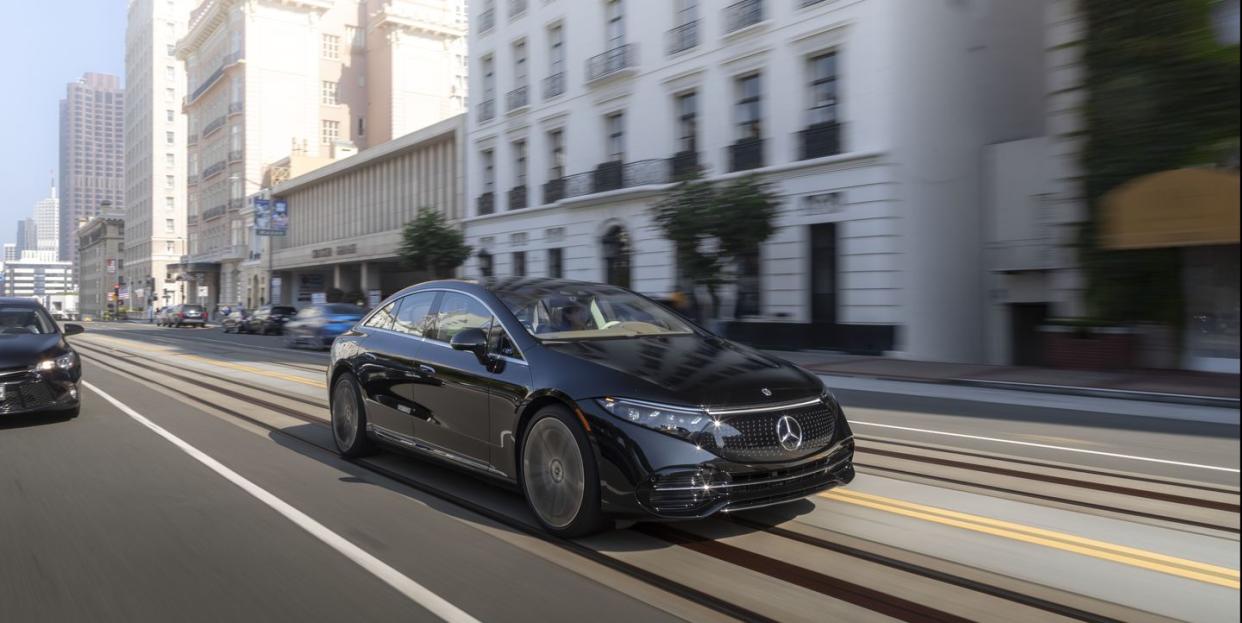
In fall 2021, Mercedes-Benz debuted the EQS, its first all-electric sedan.
“The EQS is a milestone on the way to CO2-neutrality and our plan for a climate-neutral new car fleet,” Britta Seeger, a member of the Daimler AG and Mercedes-Benz AG Boards of Management, Marketing & Sales, said in a press release announcing the EQS as “the first electric vehicle in the luxury class.”
According to a McKinsey study released in April 2022, electric vehicle sales in the United States have climbed by more than 40 percent a year since 2016, so legacy auto manufacturers liked Mercedes-Benz and Porsche are realizing that they need to focus on expanding their electric offerings to compete with all-electric brands like Tesla and Lucid Motors.
With the EQS, Mercedes-Benz is making a compelling argument that luxury auto consumers should stick with a brand they know. “The EQS is designed to exceed the expectations of even our most discerning customers,” Ola Källenius, CEO of Daimler AG and Mercedes-Benz AG, said. “That's exactly what a Mercedes has to do to earn the letter ’S’ in its name,” he added, referring to the brand’s top-of-the-line designation. “We don't award that letter lightly.”
Having debuted at American dealerships in fall 2021, the EQS comes in two models: the EQS 450+, which starts at $102,310, and the all-wheel drive EQS 580 4MATIC, which starts at $119,110.
Having spent a week with the former, I’m convinced that cars like these are the future. In fact, Mercedes-Benz has committed to focusing only on electric vehicles starting in 2025, and the automaker recently announced an EQS SUV.
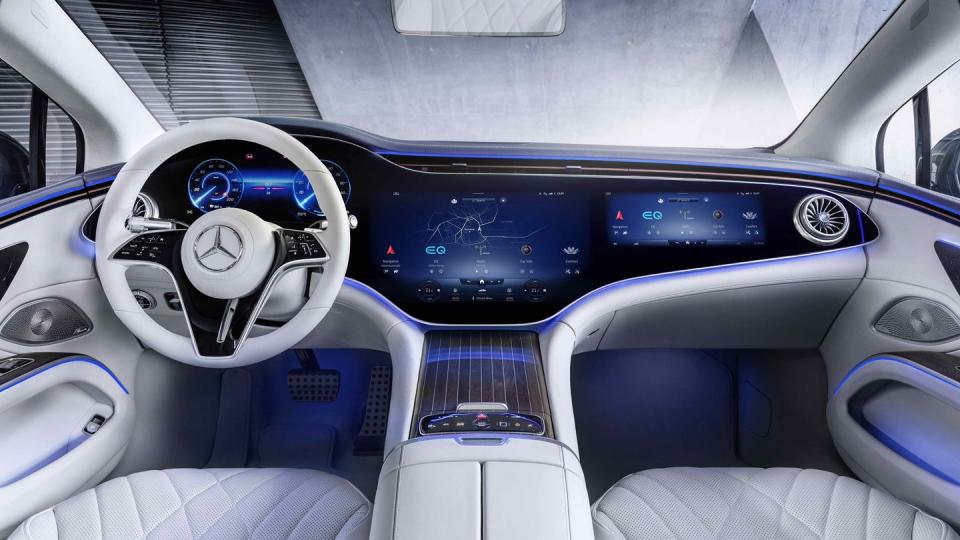
Let’s start with the interior of the EQS sedan. Multiple passengers of mine compared it to a cockpit of a spaceship or a fighter jet—and I don’t think that was just because Top Gun: Maverick hit theaters the day I picked up the car.
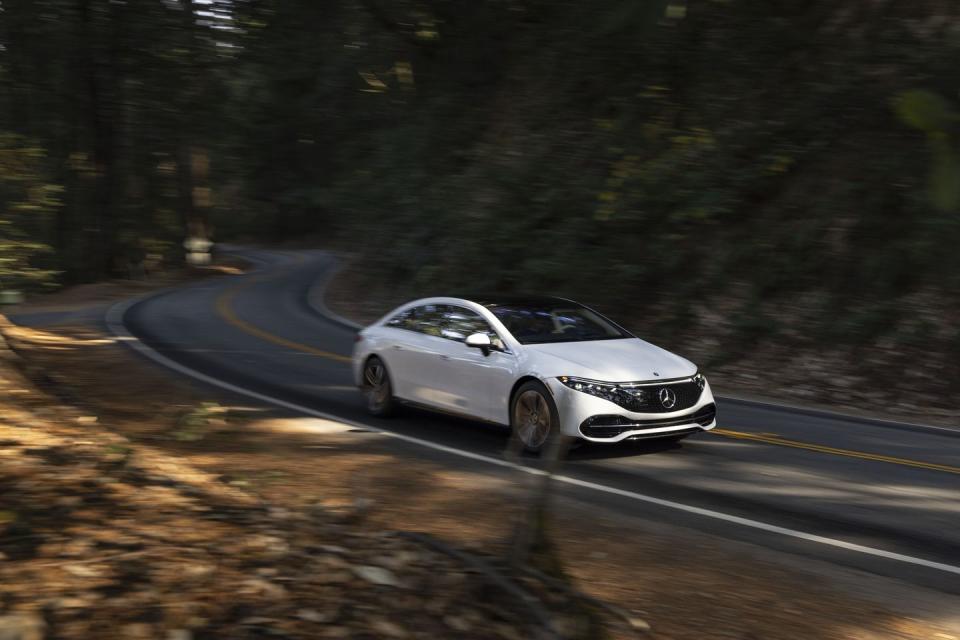
“The whole thing is like one big computer,” one passenger said. It’s a fitting comment—Mercedes-Benz is the first automaker to feature a screen that spans the entire dashboard. In this case, it’s the Hyperscreen, a 56-inch-wide, curved glass surface that actually includes three separate screens. There’s one for the driver, an extra-large one in the center, and a separate one for the passenger that allows her to control, among other things, how intense of a hot shoulder massage she would like.
The luxuries don’t end there. The headrests for all four passengers are the softest, most pillow-like I’d ever experienced. I found myself leaning back in my seat just to experience the cloud-like comfort.
As a driver, I also benefitted over and over again from MBUX, the technology behind the screen that also includes a built-in, voice-controlled assistant. I tapped the microphone button on the steering wheel and asked it to navigate me to find the closest charging station to Millbrook, New York, where I was visiting friends. I also asked it for the weather, just like I ask Siri on my iPhone, but Siri can’t activate a seat massaging system like MBUX can. I learned after I’d returned the car that MBUX can also be summoned by saying, “Hey, Mercedes.” In fact, each occupant of the car can make voice requests, and the EQS’s microphones allow the system to determine which passenger is making the request and adjust that person’s seat accordingly if the request is location-specific.
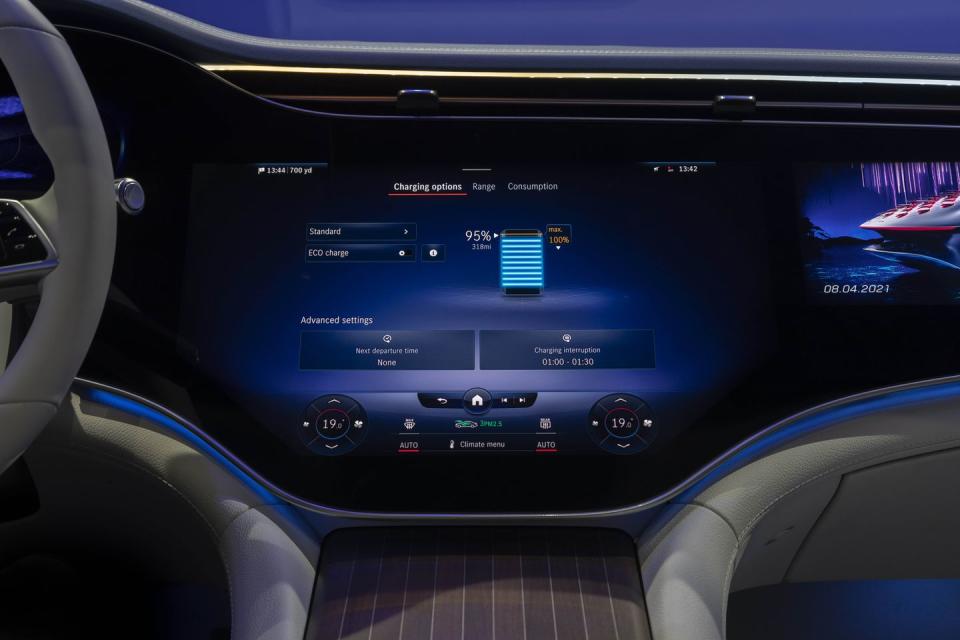
I also appreciated the Driver Assistance Systems. Once I activated cruise control on the highway, for example, Active Lane Keep Assist kept the car within its lane even after I took my hands off the steering wheel for a moment (after a few seconds, a dashboard warning prompted me to put them back on the wheel). When I clicked the turn signal and initiated a lane change, Active Lane Change Assist took over and moved the car into the other lane. Fortunately, I didn’t need to make use of the Active Brake Assist feature that helps to avoid impending collisions.
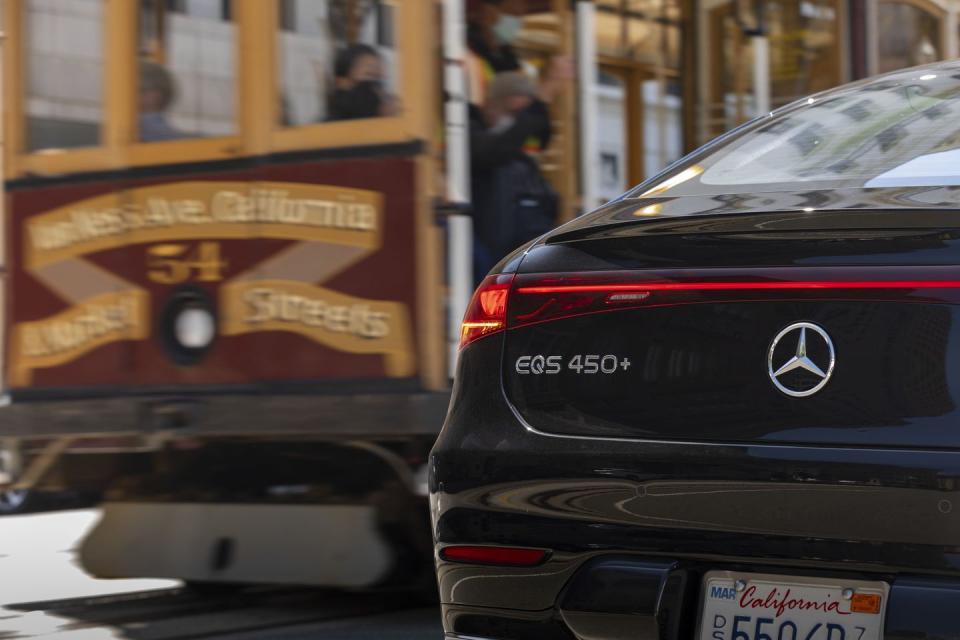
In spite of all these accolades, the exterior design had its detractors. “Shame about it looking like a computer mouse,” one of my Instagram followers commented after I posted a photo of the car to my story. In its defense, Mercedes points out that the unique design of the EQS makes it the world’s most aerodynamic production vehicle, with a drag coefficient of just 0.20. (The Tesla Model S reportedly has a drag coefficient of 0.208 and the Lucia Air’s is 0.21.)
I also ran into a slight issue with charging. Electric vehicles charges at three levels: Level one charging is achieved by plugging into a standard, 110-volt electric outlet, and a full level 1 charge takes overnight; some home chargers and most public charging stations charge at level two, where a full charge takes three-and-a-half hours; level three DC fast chargers can charge the battery in about half an hour. While the three charging stations I used all worked without a hitch and charged the battery with energy levels of six, 50, and 100 kilowatts, respectively, when I tried using the level one charger that came with the car, it tripped the reset button on the GFCI outlet I used after a few minutes of charging.
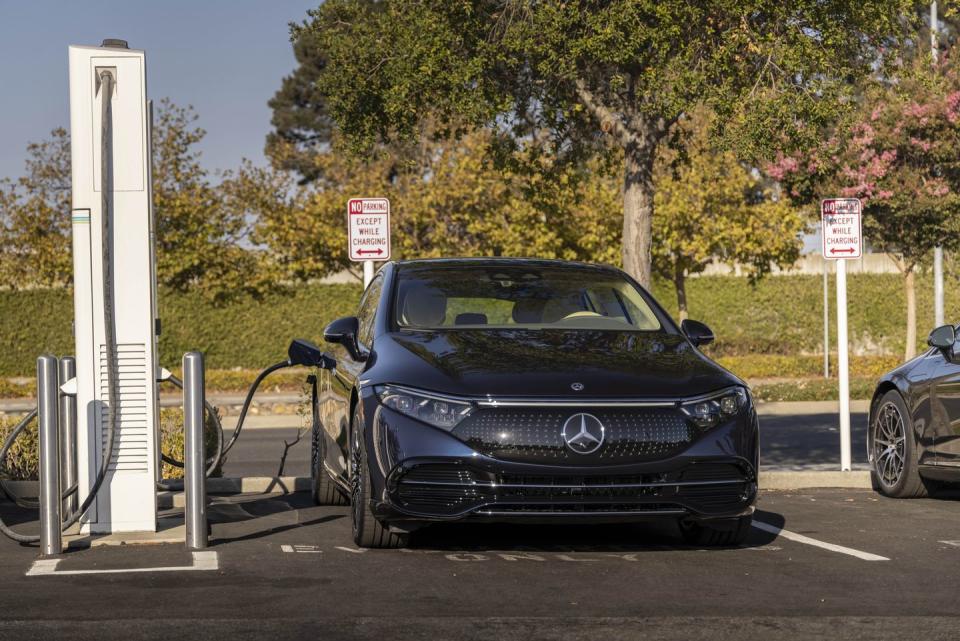
It wasn’t a major problem since the EQS had a range of 350 miles on a single charge—falling in between competitors like the Porsche Taycan (282 miles) and the Tesla Model S (396 miles) and Lucid Air (520 miles). I was also never far from a charging station in New York or Connecticut (Mercedes's electric vehicles are compatible with more than 90 percent of public charging stations in the United States), but if I had been in a rural area and wall charging was my only option, it would have been an issue. Soon, though, the number of charging stations in the United States is expected to outnumber gas stations. The Biden administration has set a target making half of the American auto fleet electric by 2030, and the Bipartisan Infrastructure Law provides an investment toward the goal of a network of 500,000 chargers across the country.
If electric vehicles are the future—and it certainly looks like they will be—I’d be very content with one as comfortable as the EQS.
You Might Also Like

